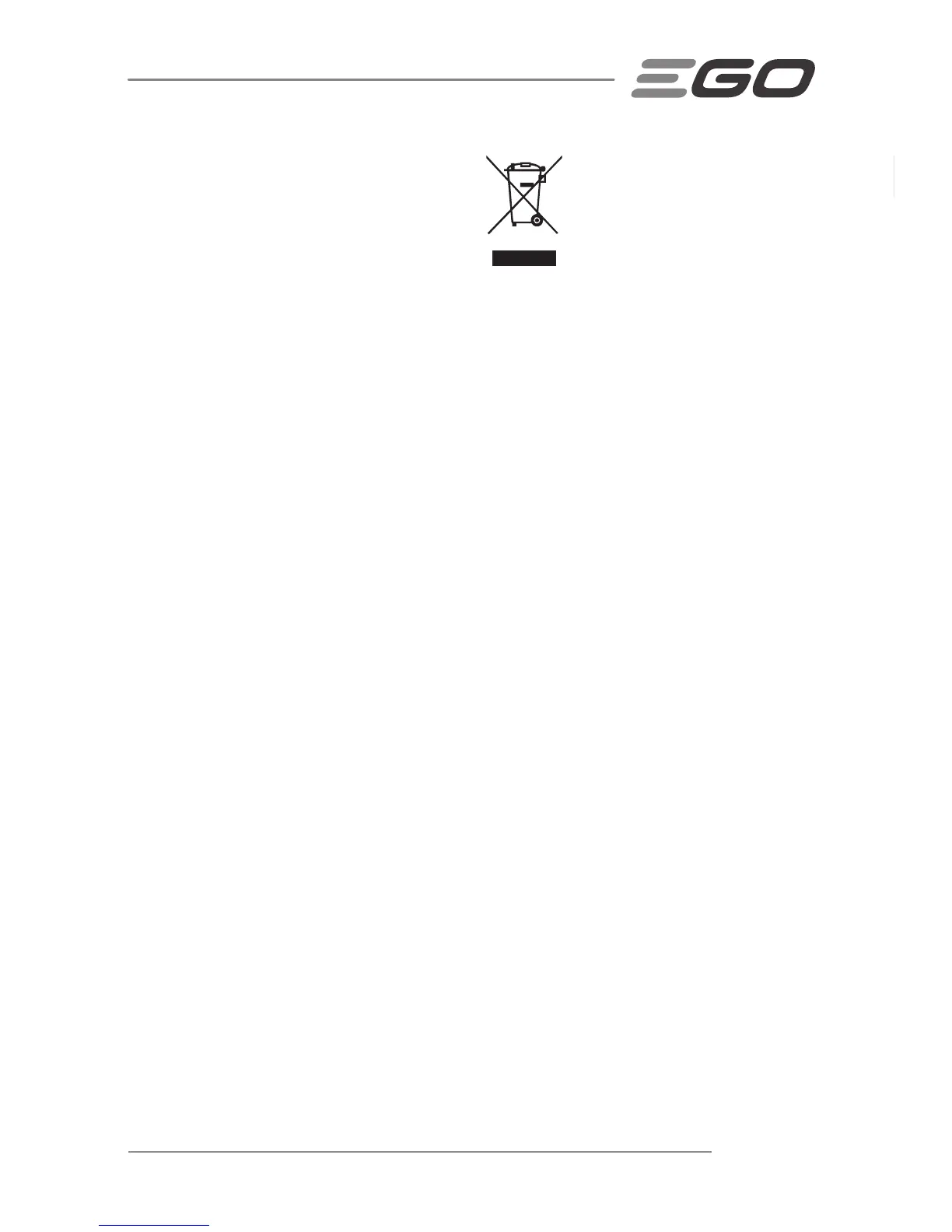◾ Improper ling angle of the side plate can increase the
risk of a severe kickback.
◾ Raker (depth gauge) clearance. Too low increases
the potential for kickback. Not low enough decreases
cutting ability.
◾ If cutter teeth have hit hard objects, such as nails and
stones, or have been abraded by mud or sand on the
wood, have the chain sharpened by a qualied service
technician.
NOTICE: Inspect the drive sprocket for wear or damage
when replacing the chain. If signs of wear or damage are
present in the areas indicated, have the drive sprocket
replaced by qualied service technician.
GUIDE BAR MAINTENANCE
When the guide bar shows signs of wear, reverse it on
the saw to distribute the wear for maximum bar life. The
bar should be cleaned every day of use and checked for
wear and damage. Feathering or burring of the bar rails
is a normal process of bar wear. Such faults should be
smoothed with a le as soon as they occur. A bar with any
of the following faults should be replaced.
◾ Wear inside the bar rails which permits the chain to lay
over sideways.
◾ Bent guide bar.
◾ Cracked or broken rails.
◾ Spread rails.
In addition, the guide bar has a sprocket at its tip. The
sprocket must be lubricated weekly with a grease syringe
to extend the guide bar life. Use a grease syringe to
lubricate weekly with chain oil by means of the lubricating
hole. Turn the guide bar and check that the lubrication
holes and chain groove are free from impurities.
TRANSPORTING AND STORING
◾ Do not store or transport the chain saw when it is
running. Always remove the battery pack before
storing or transporting.
◾ Always place the guide bar sheath on the guide bar
and chain before storing or transporting the chain saw.
Use caution to avoid the sharp teeth of the chain.
◾ Clean the chain saw thoroughly before storing. Store
the chain saw indoors, in a dry place that is locked
and/or inaccessible to children.
◾ Keep away from corrosive agents such as garden
chemicals and de-icing salts.
Protecting the environment
Do not dispose of electrical appliances
as unsorted municipal waste, use
separate collection facilities.
Contact your local government for
information regarding the collection
systems available.
If electrical appliances are disposed of in
landlls or dumps, hazardous substances
can leak into the groundwater and get
into the food chain, damaging your health
and well-being.
